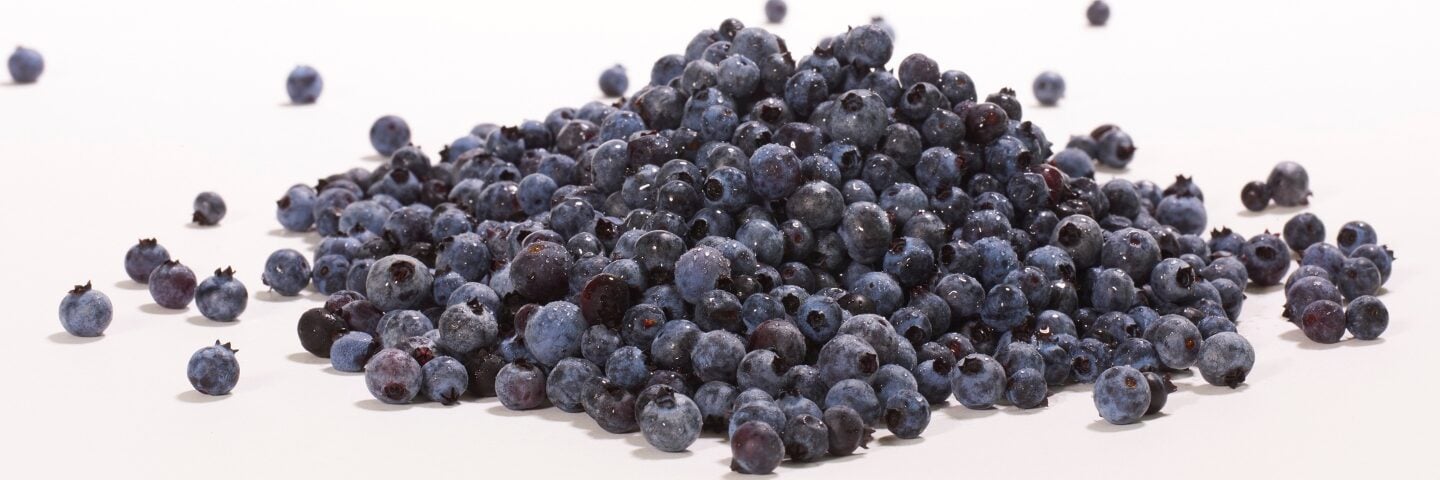
What makes wild blueberries unique?
Answer
Wild blueberries are native to Maine and Canada and grow in areas named “barrens” that are thin, rocky, acidic soil deposits left behind by glaciers around 10,000 years ago. Wild blueberries thrive where little else does, and their fight for survival allows them to gain potency as a result. The way they grow is also unique in that takes 2 years for a bush to produce berries ready for harvesting.
While wild blueberries are smaller than cultivated blueberries, they have a higher skin-to-pulp ratio. This means that they have a lower water content, but are very high in antioxidant-rich pigments, fiber, and intense flavor. They are loaded with anthocyanins1 which are the plant compounds found in the skin of the wild blueberry and other purple produce that give them their unique hue. A growing body of research suggests anthocyanins2 work to reduce inflammation and are beneficial to humans.
Check out www.wymans.com to find wild blueberries and our other products at a store near you.
For more information on wild blueberries, please visit www.wildblueberries.com.


